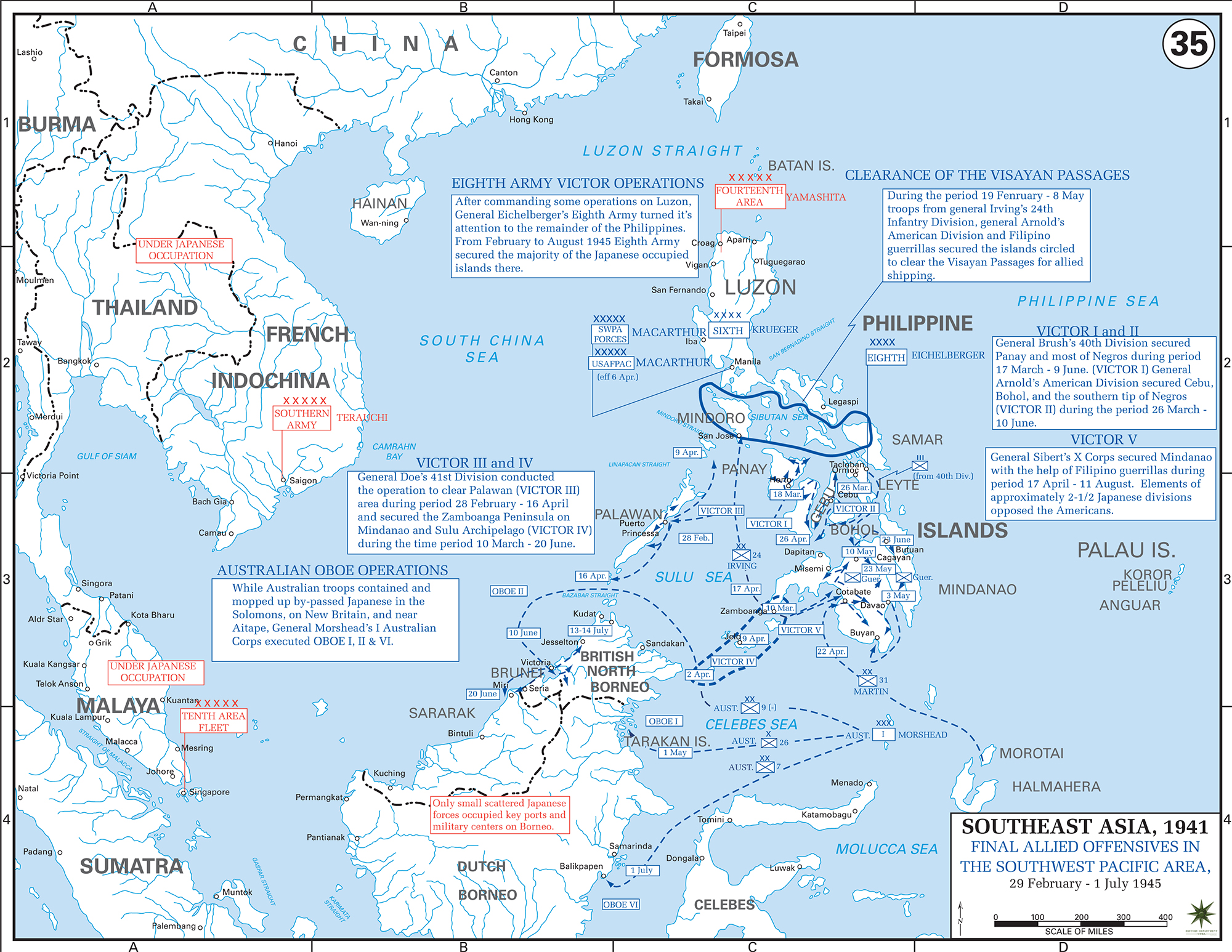Map Description
Historical Map of World War II:
Southeast Asia and the Pacific 1945
Illustrating:
Final Allied Offensives in the Southwest Pacific Area
29 February - 1 July 1945
From February 29 to July 1, 1945, the final Allied offensives in the Southwest Pacific Area were characterized by a
series of rapid, coordinated amphibious and ground operations designed to clear remaining Japanese forces from the
Philippines and Borneo, thereby securing vital sea lanes and airfields for the final assault on Japan.
The Eighth Army under General Robert L. Eichelberger played a central role, employing a strategy of leapfrogging to
bypass heavily defended Japanese positions and instead seize key logistical and communication centers, thus isolating
enemy garrisons and hastening their collapse.
The campaign began with the clearance of the Visayan Passages, a critical phase led by Major General Irving’s 24th
Infantry Division. These operations, starting in late February, focused on securing the central Philippine islands to
ensure safe passage for Allied shipping and to cut off Japanese movement between Luzon and Mindanao. The campaign was
marked by swift amphibious landings and aggressive inland advances that overwhelmed scattered Japanese resistance.
Operation Victor I and Victor II followed, targeting Palawan and the Visayas.
Victor I, launched in March, saw the rapid capture of Palawan, securing its airfields and denying the Japanese a base
for disrupting Allied supply lines.
Victor II targeted Panay and Negros, where Allied forces employed combined arms tactics, integrating infantry, armor,
and air support to dislodge entrenched defenders with minimal casualties.
As the campaign progressed, Victor IV and Victor V operations extended the offensive to Mindanao and the Sulu Archipelago.
These actions further fragmented Japanese command and control, enabling the Allies to dominate the southern Philippines
and secure the approaches to Borneo.
Concurrently, Australian forces under General Leslie Morshead executed the "Oboe" operations, which were pivotal in the
liberation of Borneo.
Oboe I commenced with the landing at Tarakan in May, aimed at capturing vital oil installations and airfields.
Oboe VI, the assault on Labuan and Brunei Bay in June, secured key ports and facilitated subsequent operations.
Oboe II, launched at Balikpapan in July, was the final major amphibious assault, capturing the island’s crucial oil facilities
and further tightening the Allied blockade of Japan.
Throughout these offensives, Allied strategy emphasized speed, surprise, and the exploitation of air and naval superiority.
By systematically isolating Japanese forces and seizing critical infrastructure, the Allies ensured the rapid collapse of
organized resistance in the region, paving the way for the final operations against the Japanese home islands.
Credits
Courtesy of the United States Military Academy Department of History.
Related Links
About World War IIWWII Timelines

